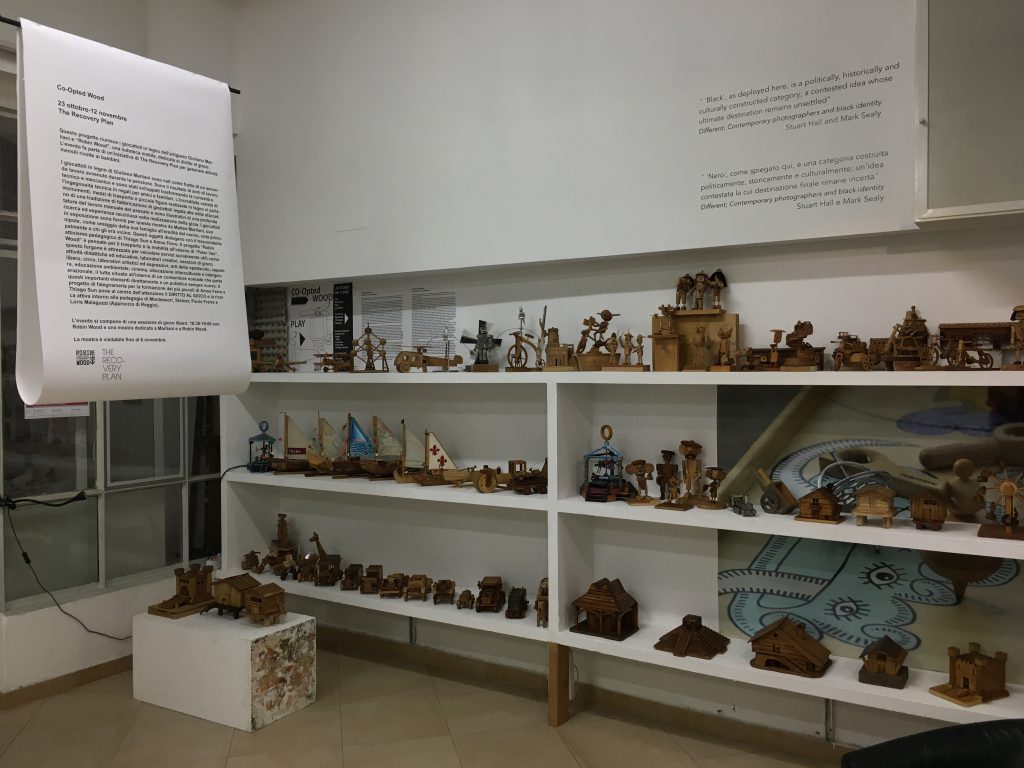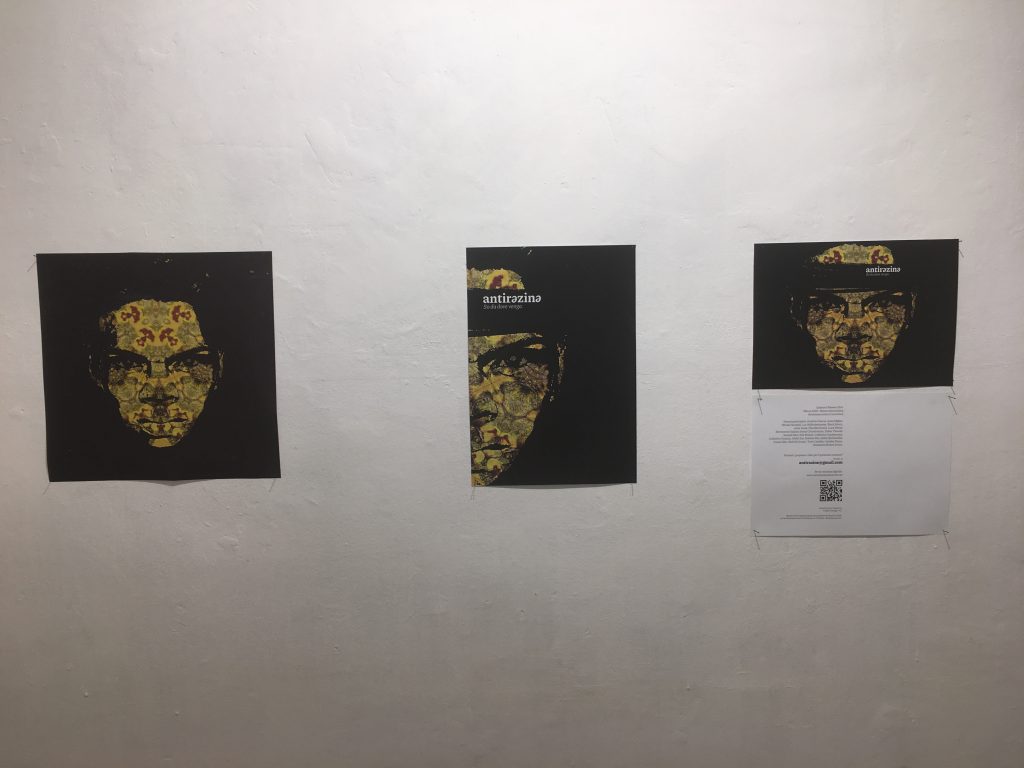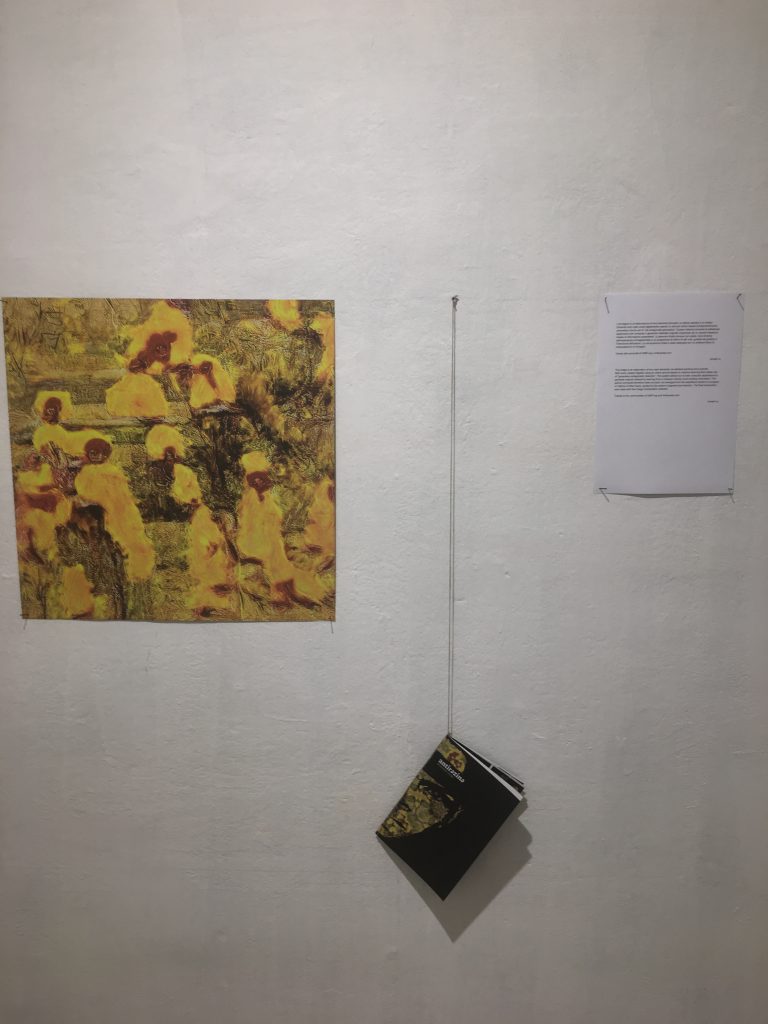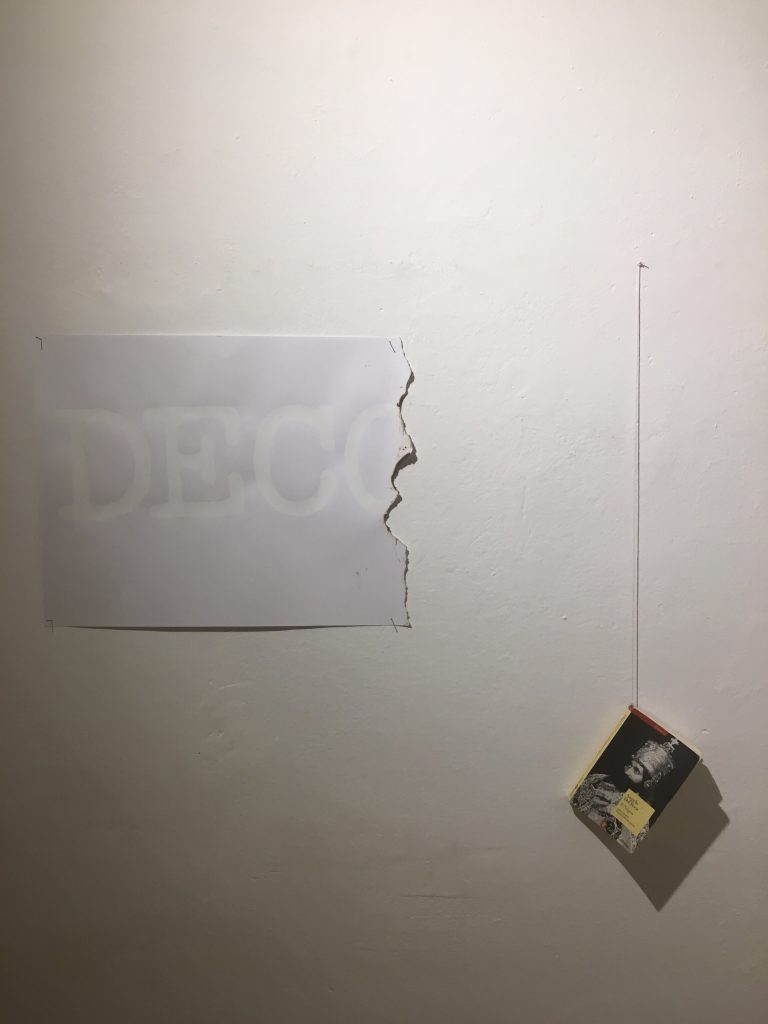By Davis Priest (University of Vermont)

The exhibit “Co-Opted Wood” at BHMF’s cultural center The Recovery Plan
In an art historical context, Florence is accepted as a powerhouse of Renaissance art and architecture. The city is alive with trophies of its former Renaissance glory and to this day Dante, Michelangelo, and Galileo contribute to Florentines’ sense of identity and pride. Yet the blinding effect of Florence’s inexhaustible Renaissance art collections can also distract the average visitor from the stunning lack of contemporary art.
As soon as I learned of my internship placement at Black History Month Florence (BHMF), I was intrigued by the nature of the organization. Each February, schools across the U.S. mark Black History Month as a time to reflect on challenging histories and amplify narratives tied to blackness in America. While the work of BHMF is especially visible in European spaces during the month of February, it also continues throughout the calendar year.

Ismael Lo’s graphic design work for Antirəzinə magazine
Longtime Florence resident and New York native Justin Randolph Thompson is the director of BHMF, an association that starts conversations through engaging with artists in its exhibition space, partnering with local art spaces, and coordinating events for the duration of February each year.
My fellow intern Alice Robertson and I met on the first day of the fall semester. We quickly discovered our shared excitement and apprehension regarding our placements at BHMF. The organization consists of eight platforms and at any given time is in dialogue with a plethora of art spaces, artists, and researchers across the world. Our first two and a half hour meeting with Justin illuminated the organization’s impressive reach.

Detail of Lo’s design work for Antirəzinə magazine
Alice and I were immediately tasked with curating a show to highlight a Young Gifted and Black Italians (YGBI) residency. Three artists – Ismael Lo, Ofelia Balogun, and Jermay Michael Gabriel – were selected to participate in a residency in the nearby town of Pistoia. Lo and Balogun collaborated on a project. Alice and I started setting up an exhibition to promote the residency and the associated artists.
We drew up a preliminary proposal of where to place each artwork. BHMF runs a cultural center and exhibition space called The Recovery Plan near Piazza San Marco, operating through the Santa Reparata International School of Art (SRISA). BHMF’s premises consists of four rooms for exhibitions, a reading room, and a central area containing a library and displaying archive material. The space is very flexible, allowing it to be used in various ways.
Ofelia Balogun’s work on migration
Alice and I were able to think creatively and propose a layout that would effectively present each artist’s work. The first room was dedicated to Lo and his graphic designs for the anti-racist magazine Antirəzinə. In the next room, we displayed the work of Balogun, who focuses on movement-based expression, including one of her dance pieces playing on a TV screen. The last two rooms contained Gabriel’s work, which deals with colonial history.
An internship that involves receiving materials, thinking through a visual proposal, and hanging an art show is a dream for two art history majors interested in museum spaces. I would like to encourage every student to visit the space and check out whatever the latest exhibition might be. Justin and the BHMF team are doing great work in the city. Interning for the organization has been an enriching addition to my study abroad experience.

